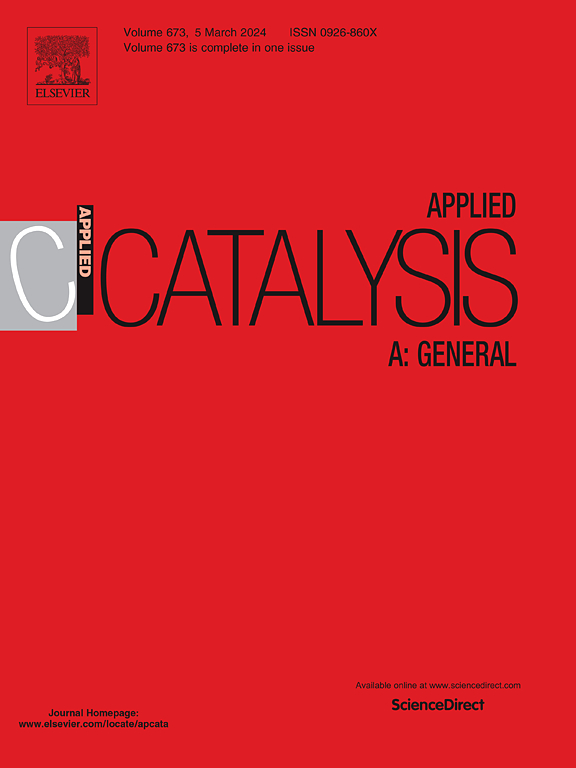The two-stage formation process of coke species on ferrierite zeolite during 1-butene skeletal isomerization revealed by surface-enhanced Raman scattering technique
IF 4.7
2区 化学
Q2 CHEMISTRY, PHYSICAL
引用次数: 0
Abstract
In this paper, a series of ferrierite (FER) zeolites with different acidities were successfully synthesized using silica sol with different concentrations as the silica sources. With the assistance of TG-MS/TPO measurement, the formation process of coke species on FER zeolite during 1-butene skeletal isomerization was investigated using surface-enhanced Raman scattering (SERS) technique with iodide-modified Ag NPs as the substrate. The results revealed that in the early reaction stage, polyaromatics and polyolefins are formed in the first stage due to strong acid sites. Later, polyolefin and olefin components from the second stage can potentially transform into polyaromatics, causing the deactivation of FER zeolite. This potential is controlled by the quantity of weak acid sites. In other words, the stability of FER zeolite in the skeletal isomerization of 1-butene exhibits a negative correlation with the abundance of its weak acid sites. These findings indirectly demonstrate the significant advantages of SERS-based coke detection method.
利用表面增强拉曼散射技术揭示了1-丁烯骨架异构化过程中铁素体沸石上焦炭的两阶段形成过程
本文以不同浓度的硅溶胶为硅源,成功合成了一系列不同酸度的铁素体(FER)分子筛。采用表面增强拉曼散射(SERS)技术,在TG-MS/TPO测量的辅助下,以碘化修饰Ag NPs为底物,研究了1-丁烯骨架异构化过程中FER沸石上焦炭的形成过程。结果表明,在反应初期,由于强酸位的存在,第一阶段形成了聚烯烃和芳烃;随后,来自第二阶段的聚烯烃和烯烃组分可能转化为聚芳烃,导致FER沸石失活。这一电位受弱酸位点数量的控制。换句话说,FER沸石在1-丁烯骨架异构化中的稳定性与其弱酸位点的丰度呈负相关。这些发现间接证明了基于sers的焦炭检测方法的显著优势。
本文章由计算机程序翻译,如有差异,请以英文原文为准。
求助全文
约1分钟内获得全文
求助全文
来源期刊

Applied Catalysis A: General
化学-环境科学
CiteScore
9.00
自引率
5.50%
发文量
415
审稿时长
24 days
期刊介绍:
Applied Catalysis A: General publishes original papers on all aspects of catalysis of basic and practical interest to chemical scientists in both industrial and academic fields, with an emphasis onnew understanding of catalysts and catalytic reactions, new catalytic materials, new techniques, and new processes, especially those that have potential practical implications.
Papers that report results of a thorough study or optimization of systems or processes that are well understood, widely studied, or minor variations of known ones are discouraged. Authors should include statements in a separate section "Justification for Publication" of how the manuscript fits the scope of the journal in the cover letter to the editors. Submissions without such justification will be rejected without review.
 求助内容:
求助内容: 应助结果提醒方式:
应助结果提醒方式:


